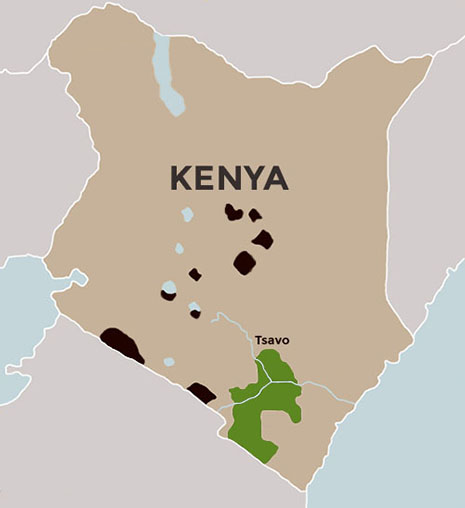No other country on earth can offer the visitor as much to see and do. Within the borders of a single country, you will find savannahs rich with big game, timeless cultures unchanged by the modern world, pristine beaches and coral reef, equatorial forests and mighty snow-capped mountains, searing deserts and cool highland retreats and endless opportunities for adventure, discovery, relaxation; more than you would ever expect.
Wildlife in Kenya is not confined to the parks and reserves although it is generally more abundant in such areas. Thus, although safaris tend to be routed through the reserves, a visitor will of often see plenty of wildlife outside.
There are parks like Masai Mara where you can see all of the Big Five (elephants, lions, leopards, rhinos, and buffalo) or Mount Meru National Park where you will be able to see over 300 species of birds. Or Lake Nakuru National Park, renowned as a bird sanctuary with over 400 bird species, including huge flocks of flamingos and many other water birds.
Or Lake Nakuru National Park, renowned as a bird sanctuary with over 400 bird species, including huge flocks of flamingos and many other water birds.There are parks that are as large as many european countries like the Tsavo National Park.
There is also Lake Bogoria which has spectacular views and reflects the searing blue skies and the rose pink of flamingo.
And what about Mombassa and Diani Beach, with world class beaches of white sand and turquoise warm water. Kenya is definitely one of the top destinations of the world.
In the following map, you can see the national parks. To learn more about each one and see what we recommend, move your mouse over the map and click in one park.


Aberdare national Park
Description
The Aberdares is an isolated volcanic range that forms the eastern wall of the rift valley, running roughly 100 km north-south between Nairobi and Thomson’s Falls. Soils are red and of volcanic origin, but rich in organic matter.
There are two main peaks, Ol Donyo Lesatima (3,999 metres) and Kinangop (3,906 metres) separated by a long saddle of Alpine moorland at over 3,000 metres. The topography is diverse with deep ravines that cut through the forested eastern and western slopes and there are many clear streams and waterfalls.
The Aberdares are an important water catchment area providing water to the Tana and Athi rivers and part of Central Rift and Northern drainage basins.
The National Park lies mainly above the tree line running along the 10,000 ft (3,048 metres) contour with some forest and scrub at lower altitude in the ‘salient’ area near Nyeri with the boundary running down to the 7,000 ft (2,296 metres) contour.
The unusual vegetation, rugged terrain, streams and waterfalls combine to create an area of great scenic beauty in the National Park.
Wildlife
The park is home to most of the larger mammals, having a large population of black rhino. The park has endangered species including the rare bongo, giant forest hog, packs of the now very rare wild dogs and endemic mole-rate and mole shrew. Other game includes leopard, serval, endemic bird species, reptiles and insects.
When to go
The winter months are from July to October. The region receives rainfall throughout the year. However, the average day time temperatures indicate that the weather is mild and not too extreme. The national park is good for a visit all year round.
What to do
Lesatima Peak, Kinangop Peak, waterfalls, walks in the moorlands, Twin Hills, Elephant Hills and Table Mountains. Second largest population of black rhinos in Salient and northern Aberdare. Queen Elizabeth II learned of her accession to the British throne at Treetops lodge. The Kimathi Hideout/Mau Mau caves.
What we suggest
Visitors can also indulge in picnics, trout fishing in the rivers and camping in the moorlands. Bird viewing is rewarding, with over 250 species of birds in the park, including the Jackson's Francolin, sparry hawk, goshawks, eagles, sunbirds and plovers.





















